I stepped onto a frosty deck at the landing, the air 34 degrees, before my neighbor Brian Doran arrived and launched his boat at 7AM. Stepping on to the likewise icy deck required care. We soon were motoring out for a smooth passage to Bull Island.
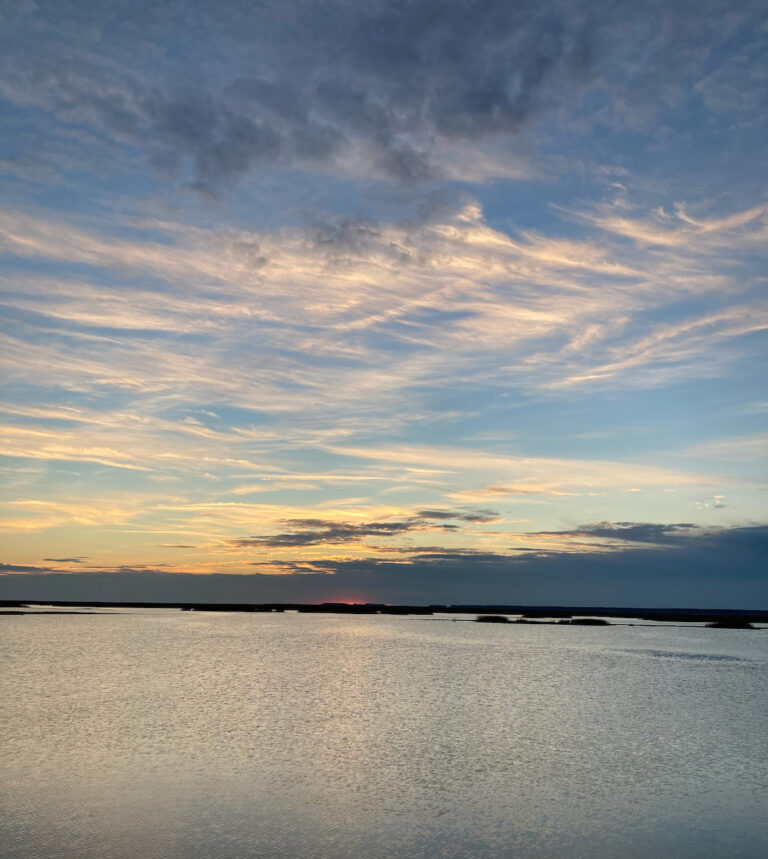
We started our hike around 7:40, ahead of the ferry’s arrival and dispersal of passengers by two hours. The cold morning had put the brakes on the mosquito horde and provided fine conditions for the walk. As we passed the Dominick House, a truck towing a passenger trailer, filled with bundled-up visitors from their two night stay at the house, and perhaps returning from a sunrise visit to the Boneyard. Close to the beach we turned on Lighthouse Road, and then again at Big Pond Road on the path to the beach.
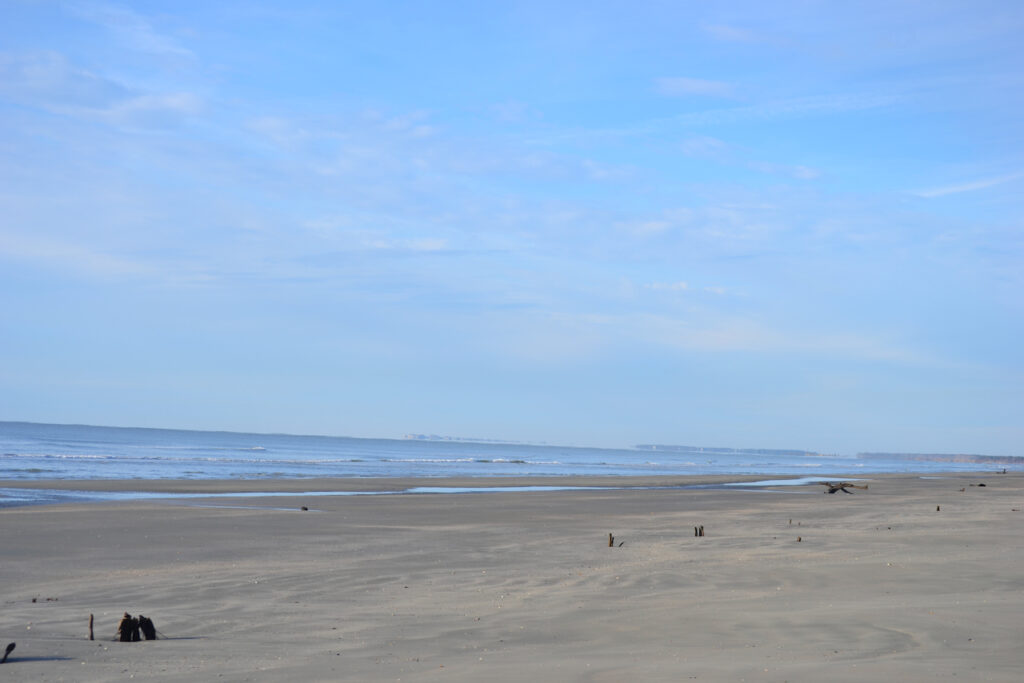
Out on the strand the clarity of the air allowed an excellent view all the way to the Isle of Palms. The intertidal zone was wide, and growing as the tide continued to fall. We headed north, having the beach to ourselves, and stopped to inspect the new exposure of the wooden vessel remains. While a few iron bolts protruded from wooden frames, several timbers at the stern were joined with trunnels – “treenails” – more clues to the craft’s story.
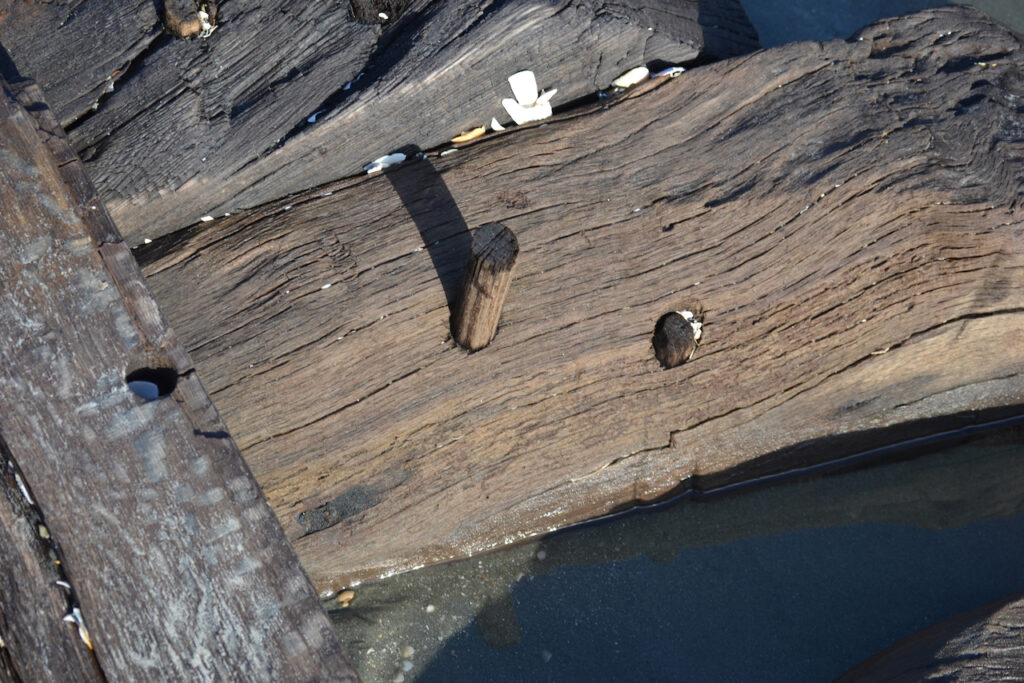
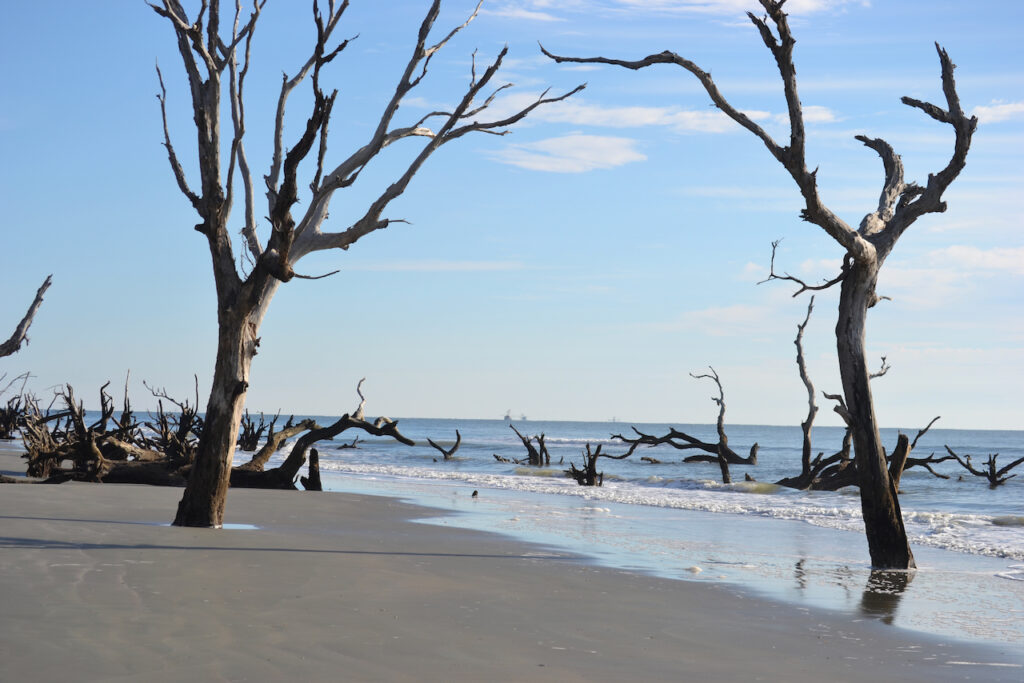
The wreck marked the southern gateway to the Boneyard, and the iconic images displayed at this skeleton forest. Shrimp boats working in proximity to the coast added a maritime element to the sights. As we approached the point, the scene became surreal as two deer returned from a morning ocean swim to the sand, and a walk through the toppled and dead trees. We became silent and still as they moved in our direction. They finally passed within twenty yards of us as if we were part of the remnant trees before they headed into the upland. We had earlier seen deer tracks across the sands, and though I have observed deer swimming in the Intracoastal Waterway in the past, I was not prepared for this duo’s ocean bath.
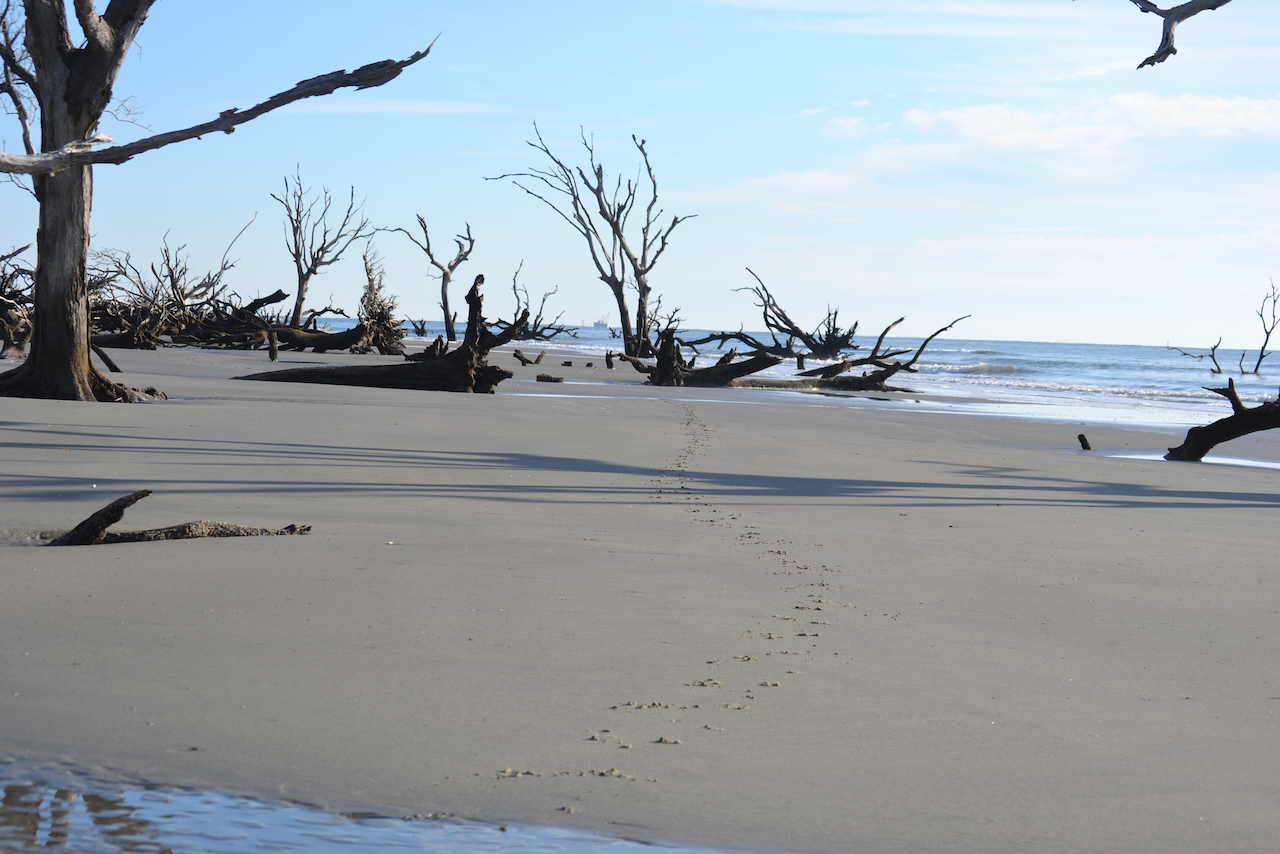
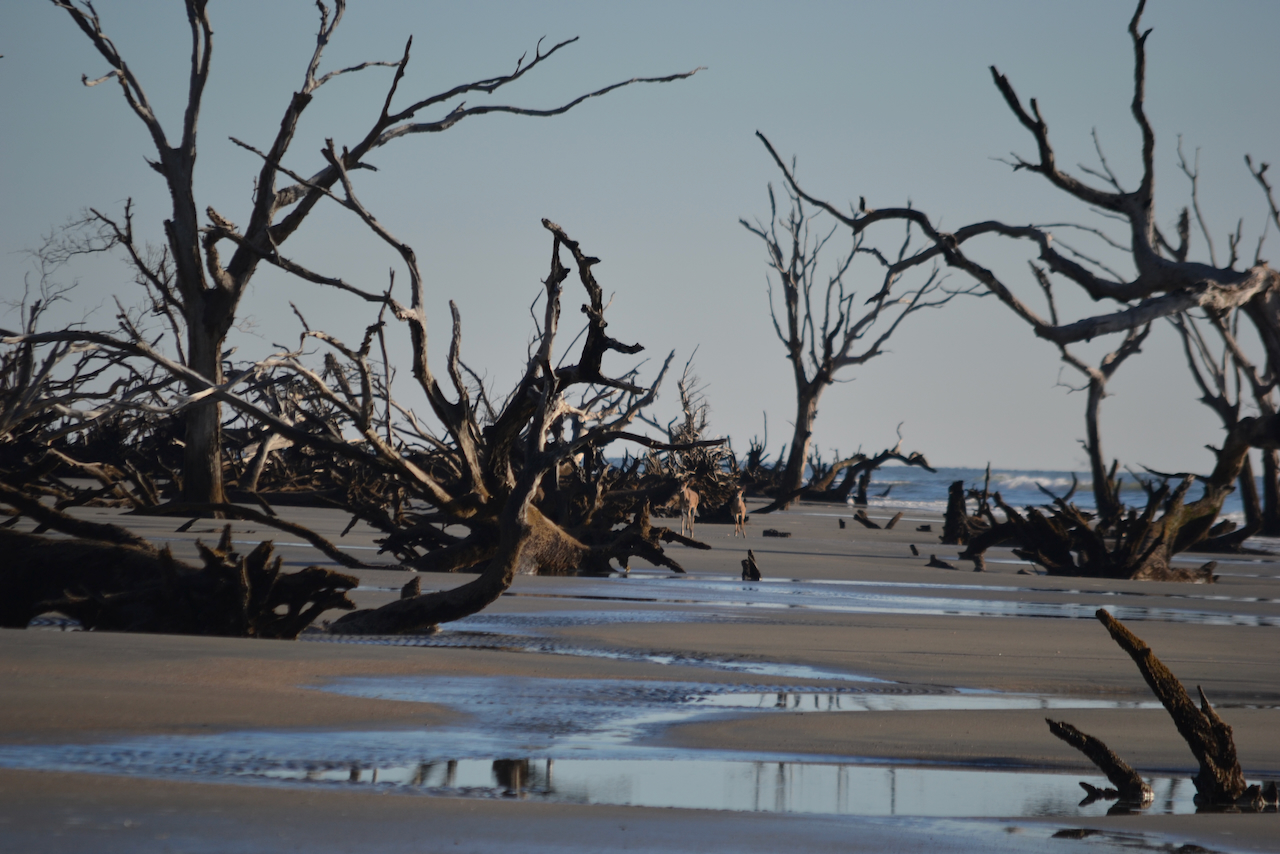
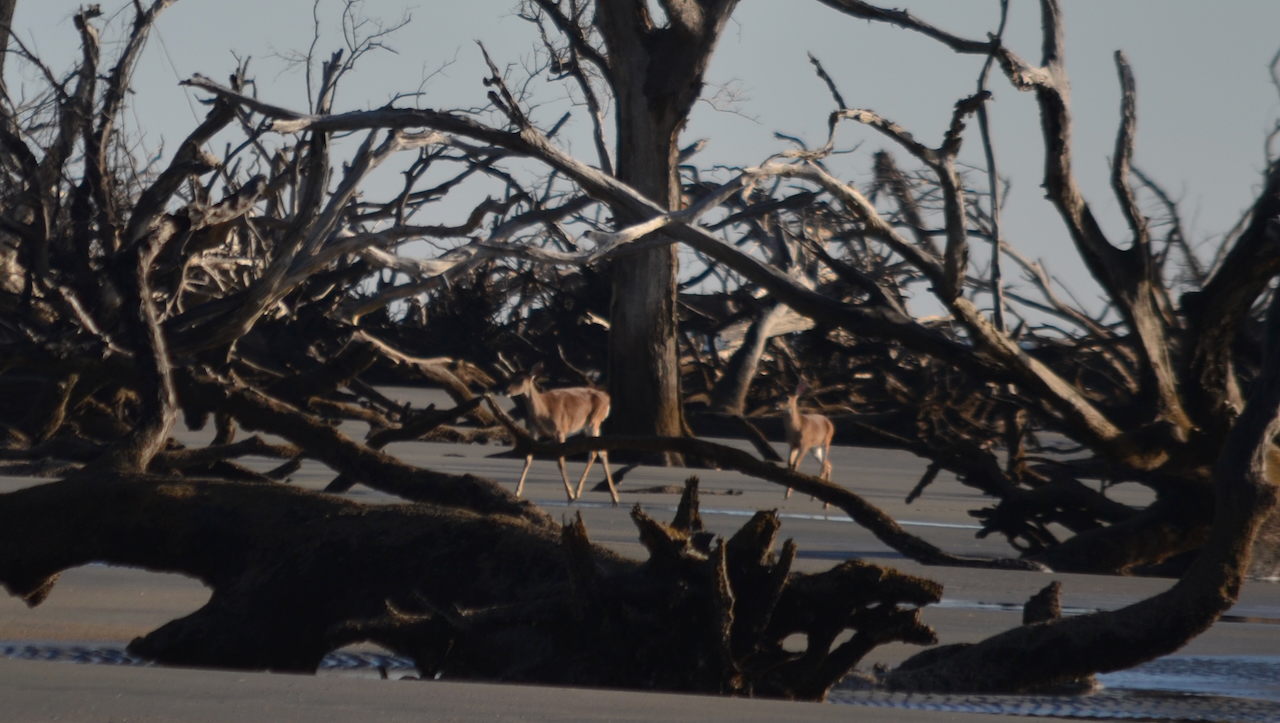
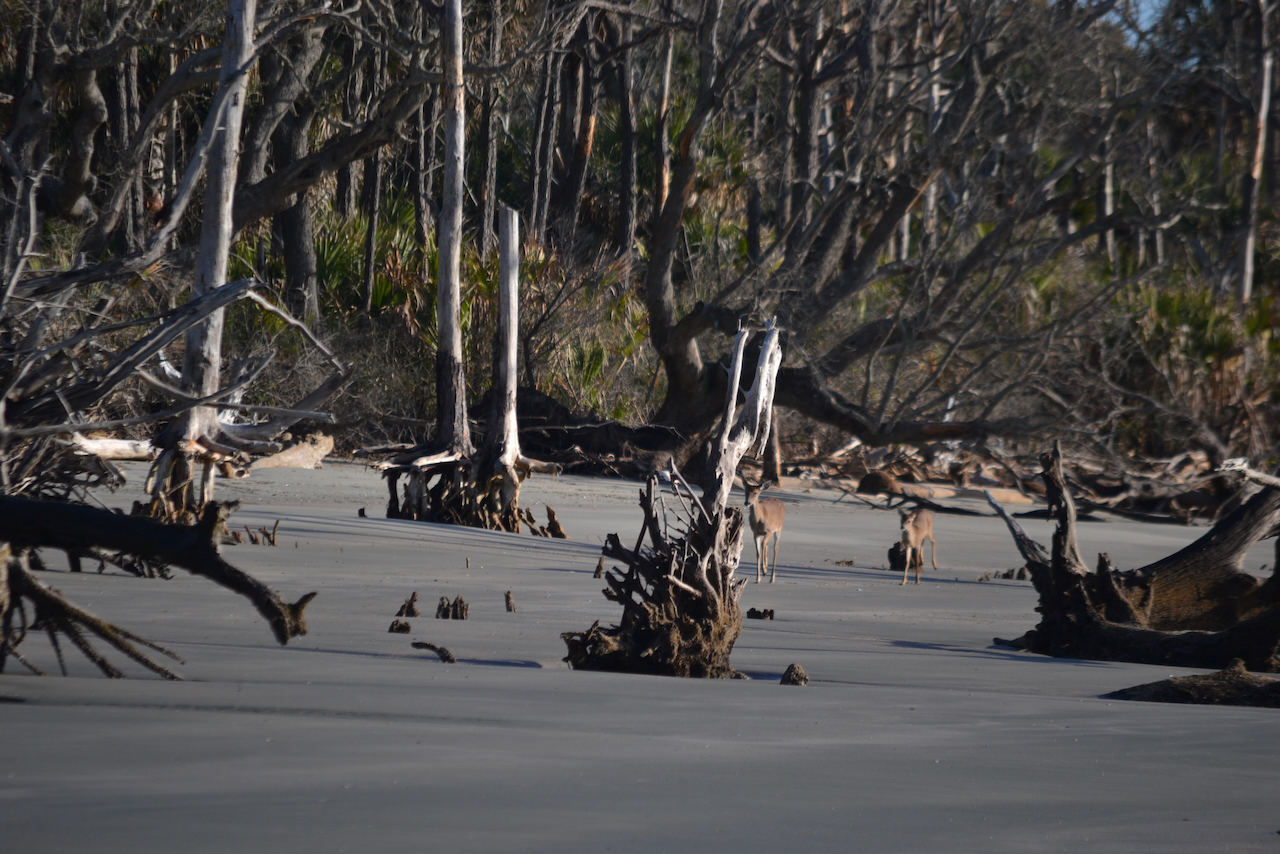
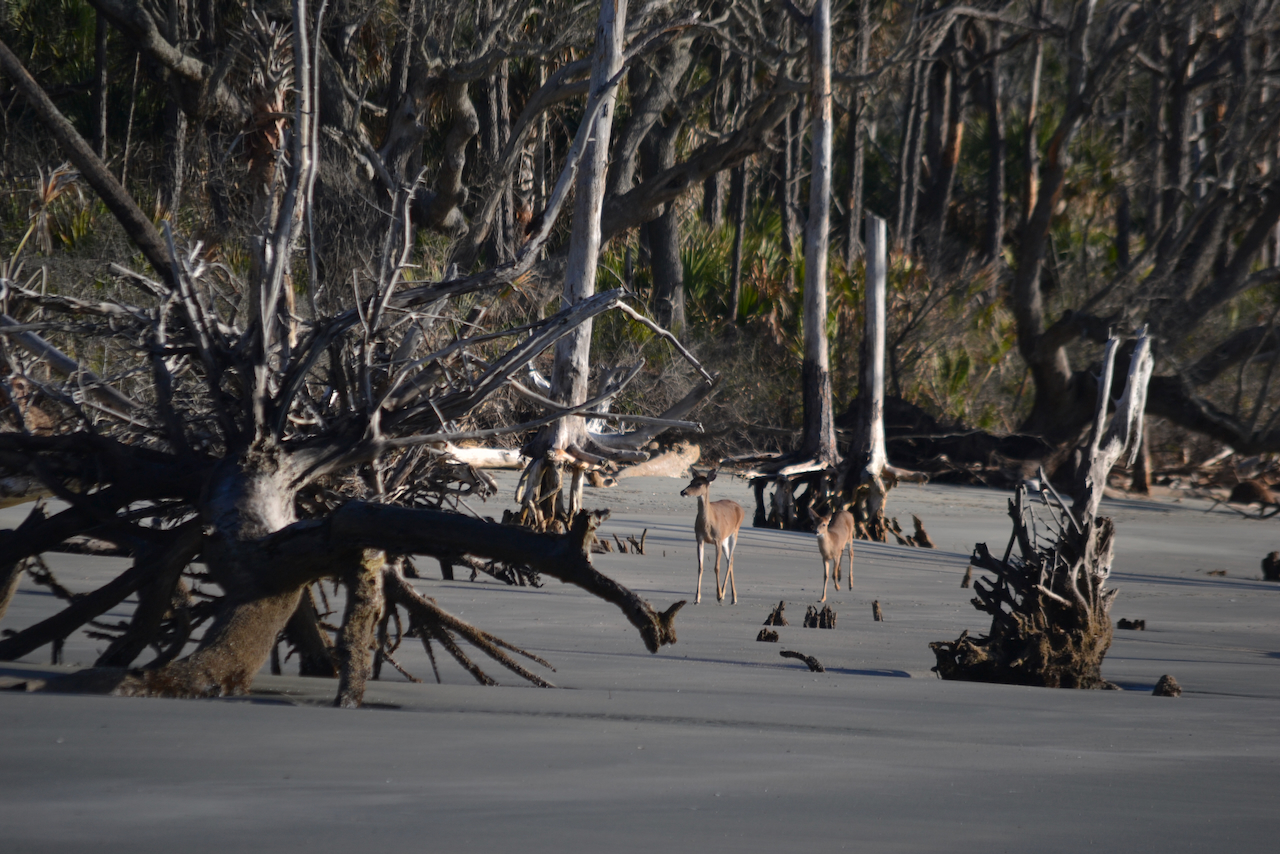

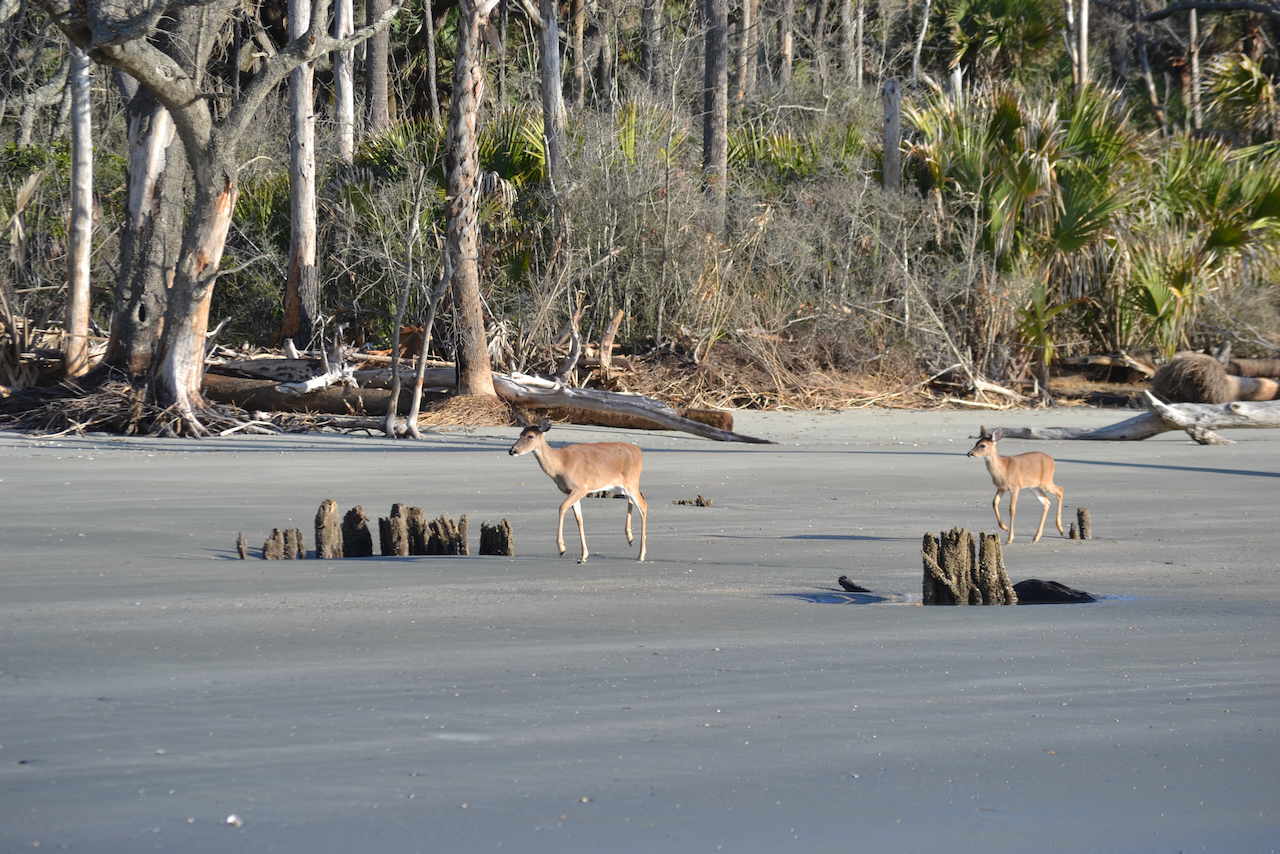
We left the Boneyard and entered the island’s road system, passing Moccasin and New Ponds, and walking up Lighthouse Road to the intersection with the dike crossing the Jacks Creek impoundment. Birds perched, swam in, and flew around these ponds. Anhinga, kingfisher, great blue heron eating a large fish, rafts of coots, ibis in flight, great and snowy egrets, wood stork sentinel, and more. The sun was just starting to warm things up, and alligators had not climbed this dike yet but a group were queued up on a point nearby.
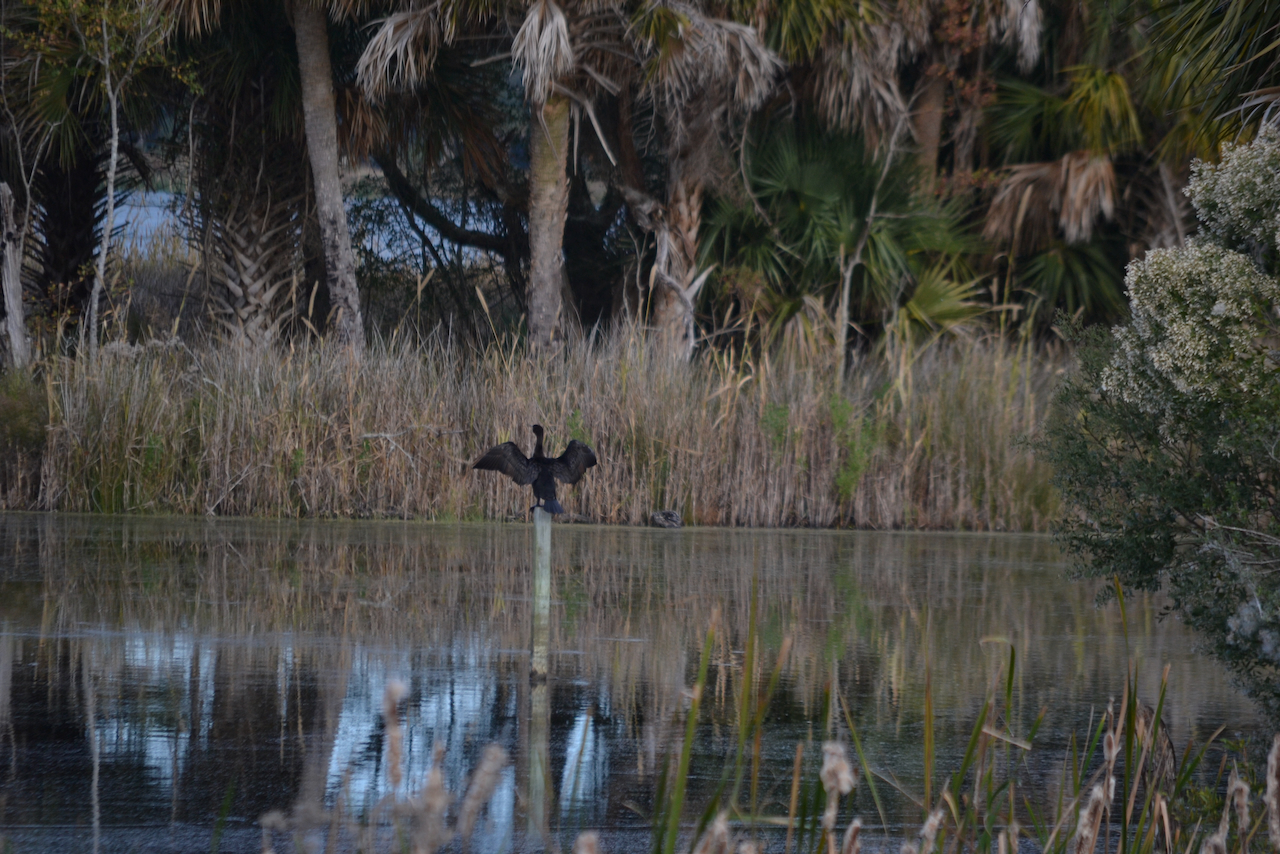
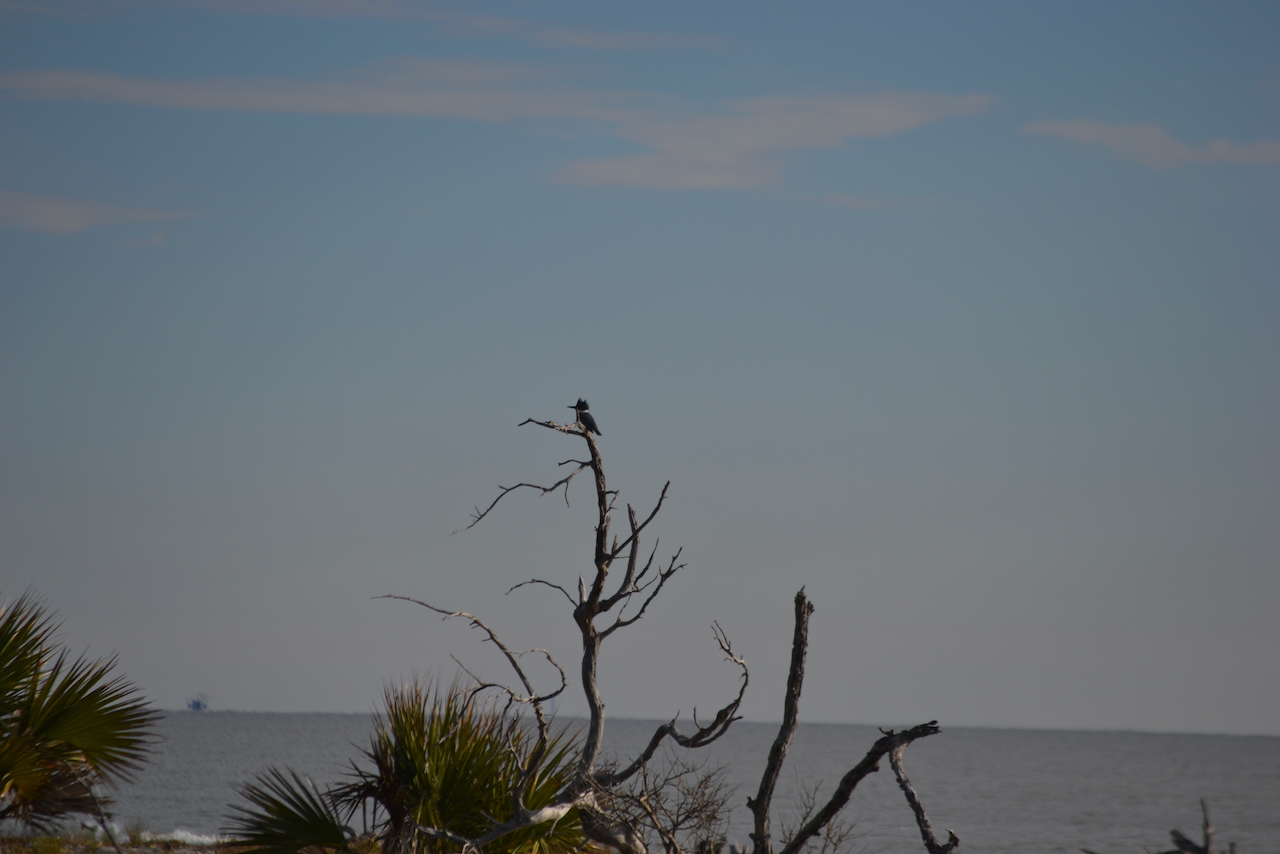
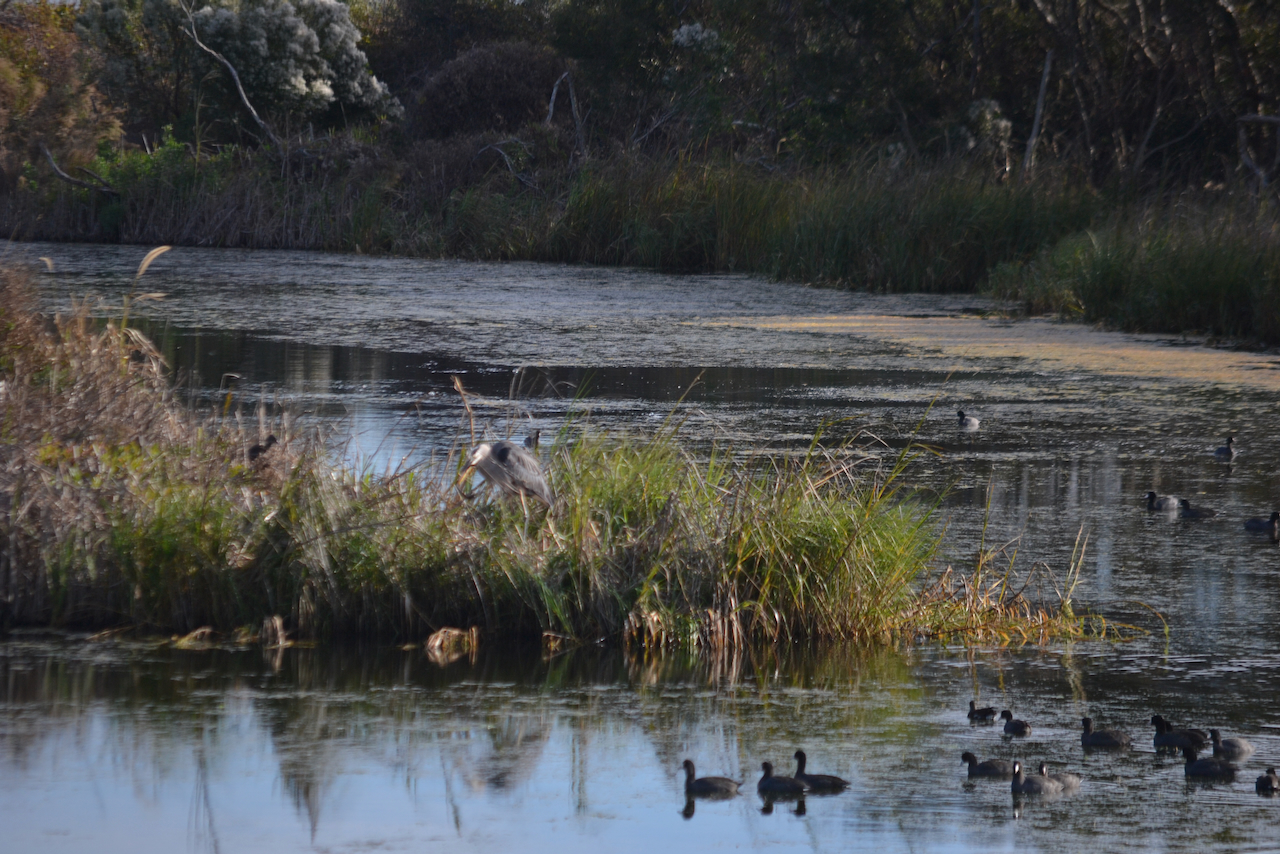
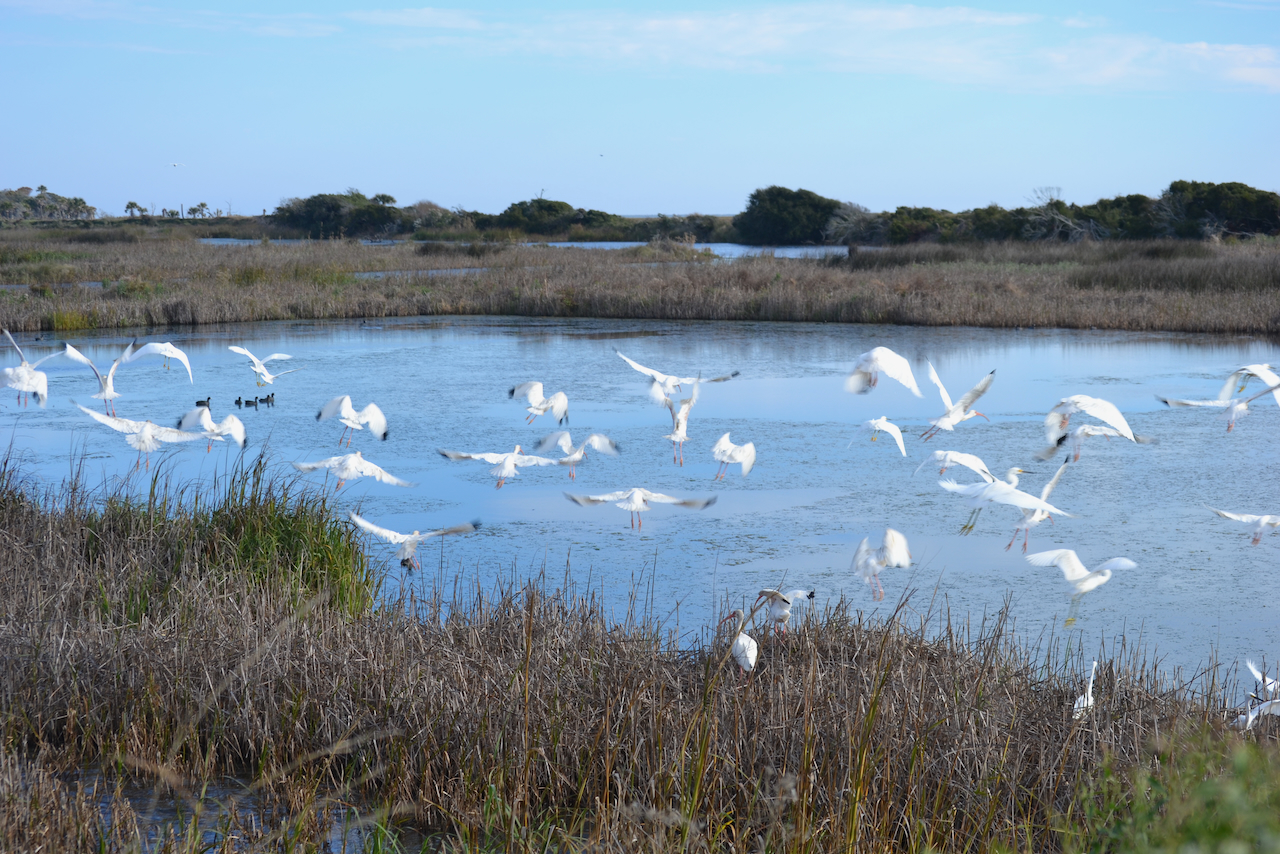
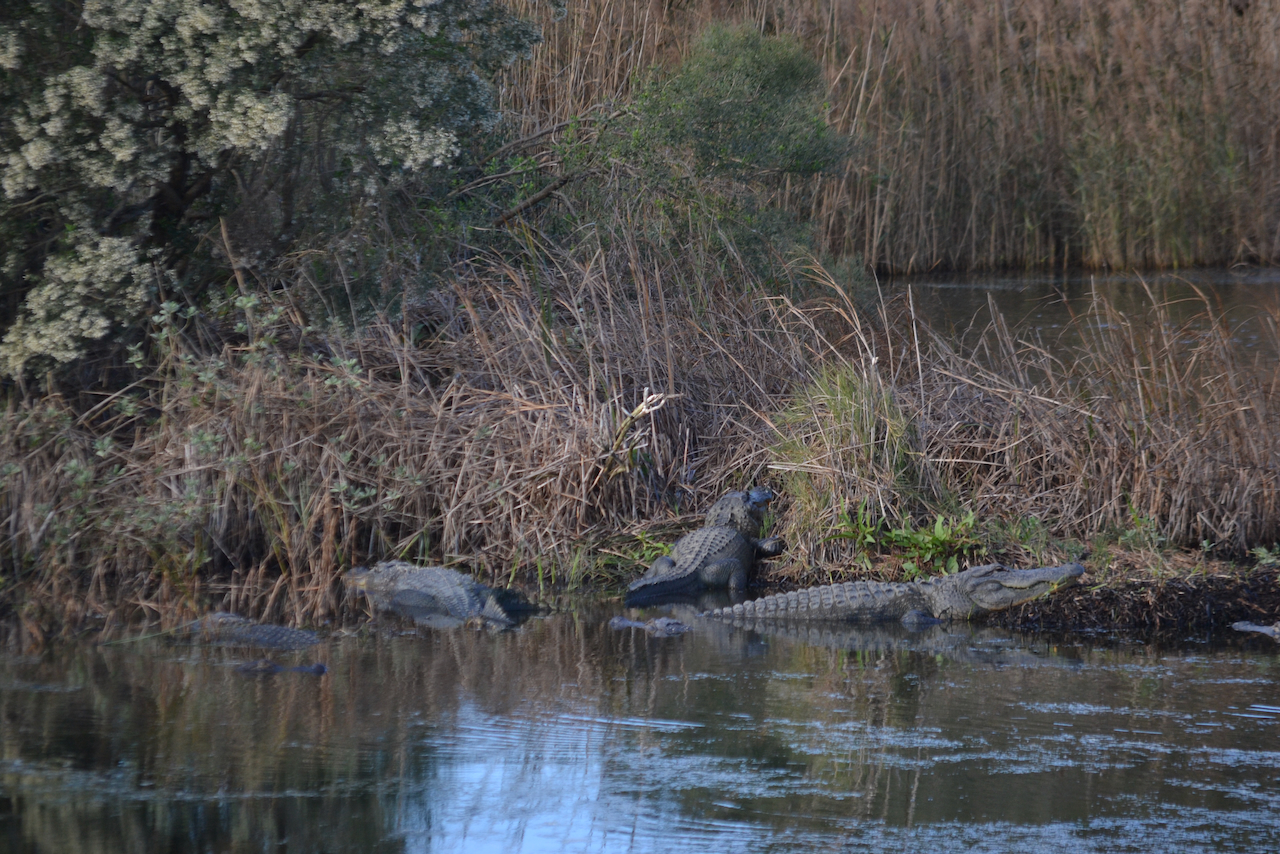
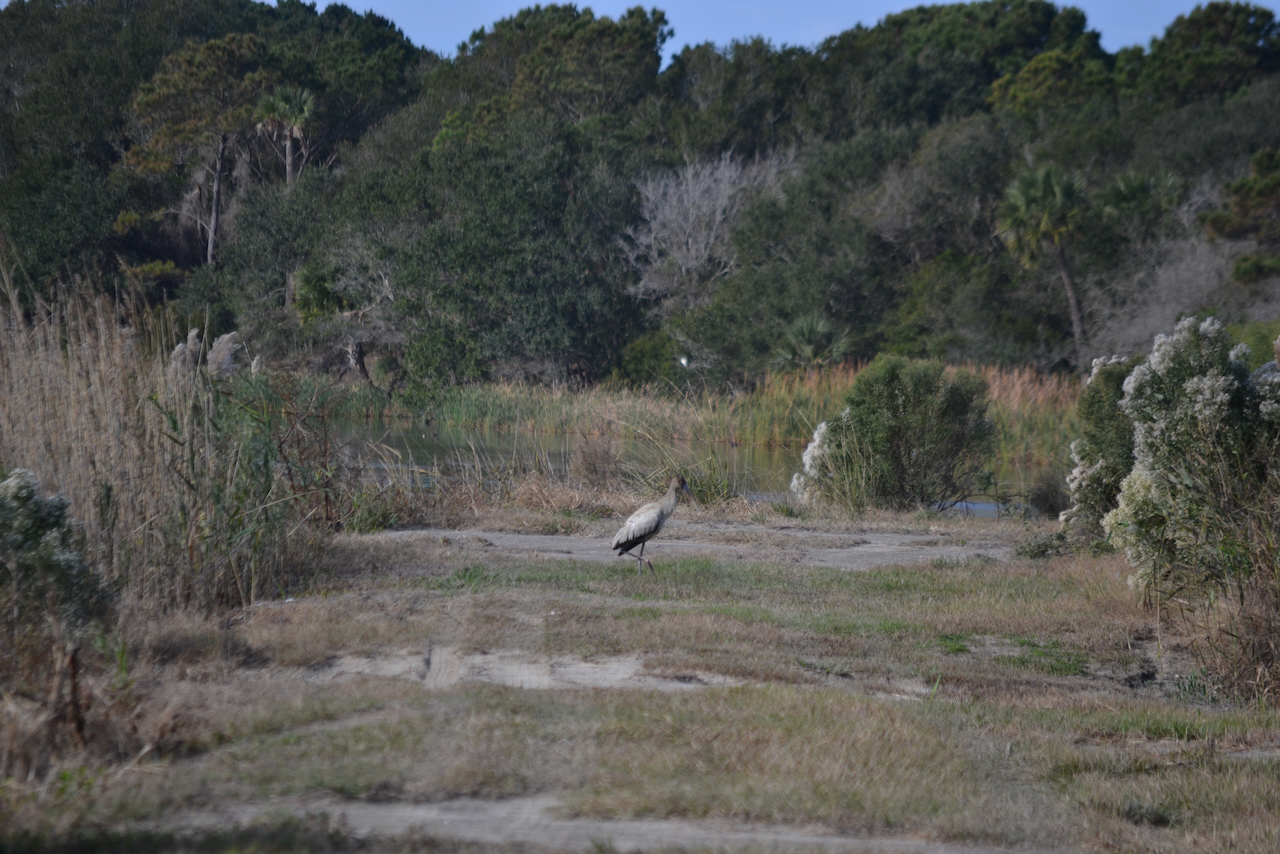
The crossing was magnificent, and the end of the dike took us to the “Old Fort”, the tabby foundation of an early eighteenth century watch tower. We paused here to view the remains, and the marsh and mainland to the west.
We made the long walk back along maritime forest on the Old Fort Road to the Dominick House, and due to the timing with the tide decided to add another loop to our total hike. We passed by the house towards the beach and turned right on the Summerhouse Road, stopping by the Magwood graveyard. Further on down the road, a raccoon crossed within yards of us.
At the Summerhouse Dike, looking to the east down the long straight bank, a fox squirrel appeared, and headed our way. In the distance beyond another black animal stood or sat in the grass, and its upright profile ruled out alligator. Soon several other animals joined it, and finally four four-legged animals walked off the dike into the forest. It was not until later, when reviewing photos and zooming in on one image that a second animal showed up sitting on a bench in the distance, and it was distinctly a cat. So ruling out our earlier speculation of raccoons or otters, a family (mother and kittens) of bobcats appeared most likely.
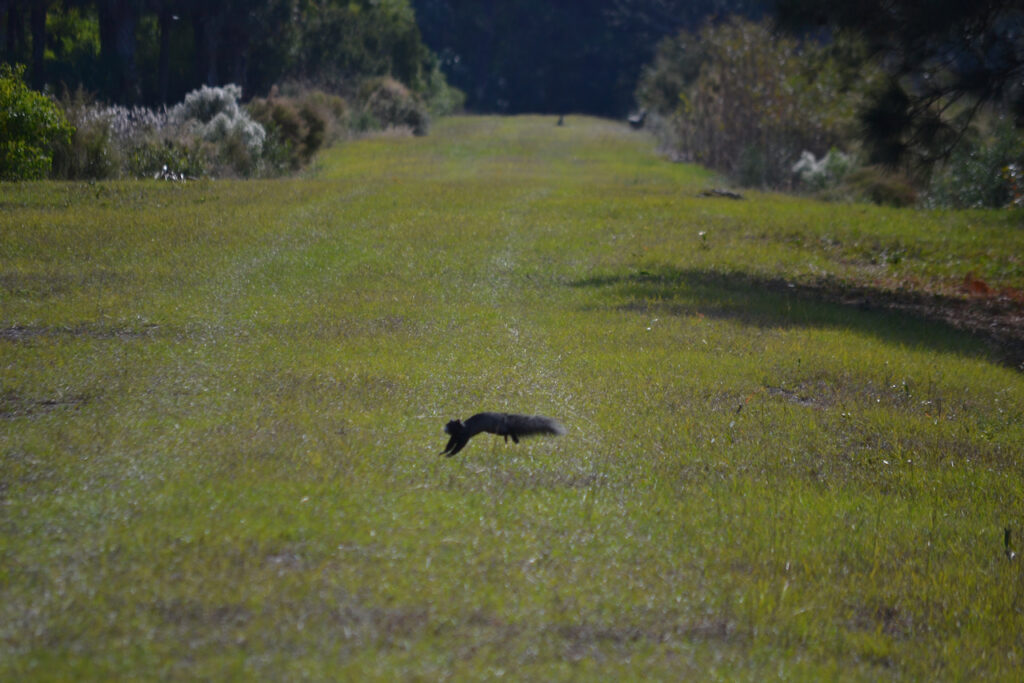
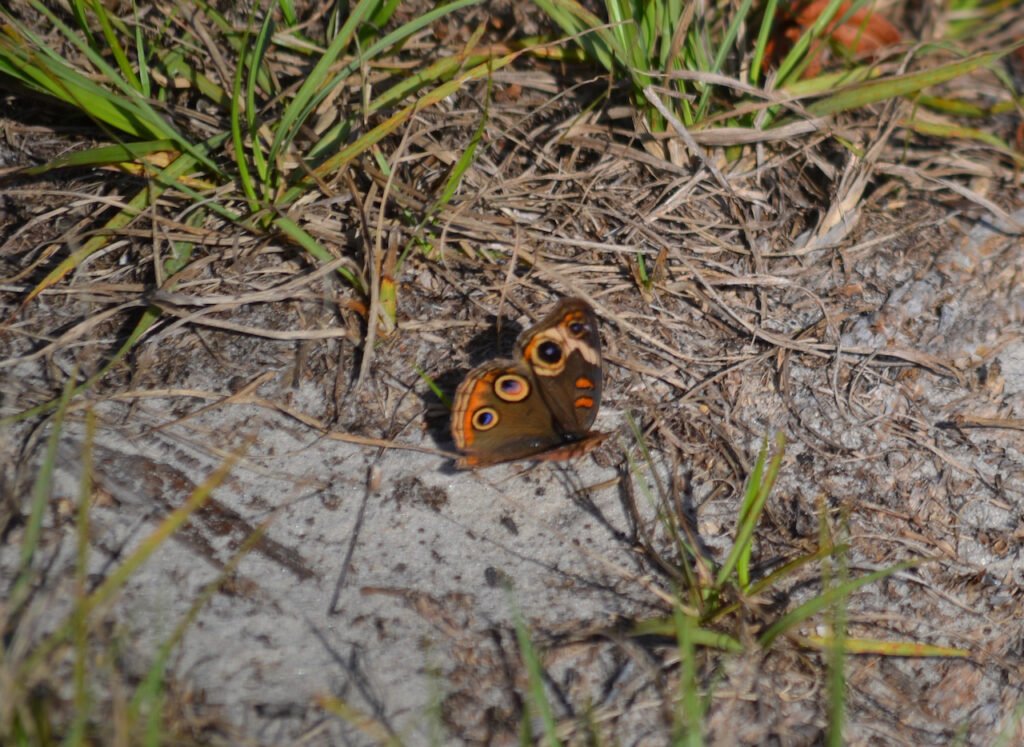
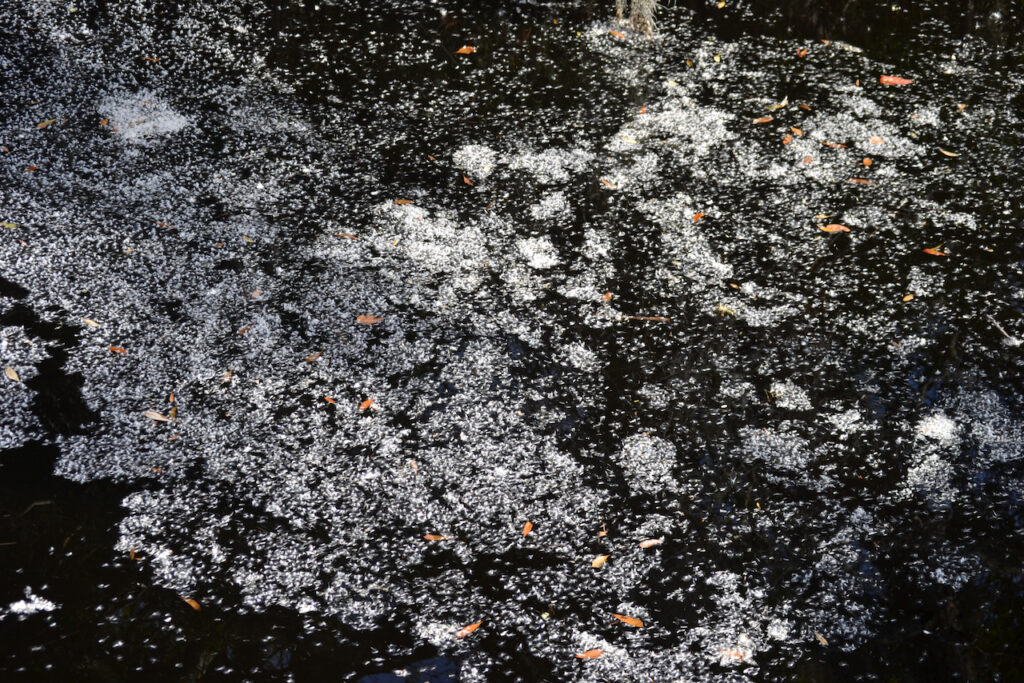
A buckeye butterfly, and a water filled ditch covered with sea myrtle achenes, added to the island imagery. We took the Turkey Walk Trail back to the dock area, passing through pines and cedars, brackish and salt marshes. At the dock we chatted with Al, the captain of Caretta, and he showed us a new animal for me – a dead octopus in the marsh grass. I decided against a photograph, the carcass of the animal lacking the beauty of all the live wildlife encountered on the island.
I was surprised at all the animal activity on such a cold day, particularly the deer swimming in the ocean. The pictures and writing were wonderful! Thank you for taking the time to capture it for us to enjoy. We truly are Blessed to have this island as a public resource.
Definitely warmed up from the chilly start. A good day to be outside for all.
Beautiful pictures! Thank you for the escape from work duties to enjoy nature!
Happy to enable your escape.
🙂 Hi Bob,, as usual, a delightful edition !! Loved The Fox squirrel sighting. Pre Hugo the island had a thriving colony but was much reduced by said storm. Nice to see they are still there. and hopefully coming back as the forest matures. FYI, a game camera caught a black bear in the delta 🙂
Yes, fox squirrels are common sights on the island these days, and not shy. No bear on the island, but two winters ago when I was walking on Seewee Road I came upon a “bear jam” – cars stopped in the middle of the road, looking at a bear. I missed the sighting.
By the way, “edition” sounds so much better than “post”.
Deer swimming in the ocean! Never heard of such. Great outing!
Yes, and it wasn’t accidental but intentional.